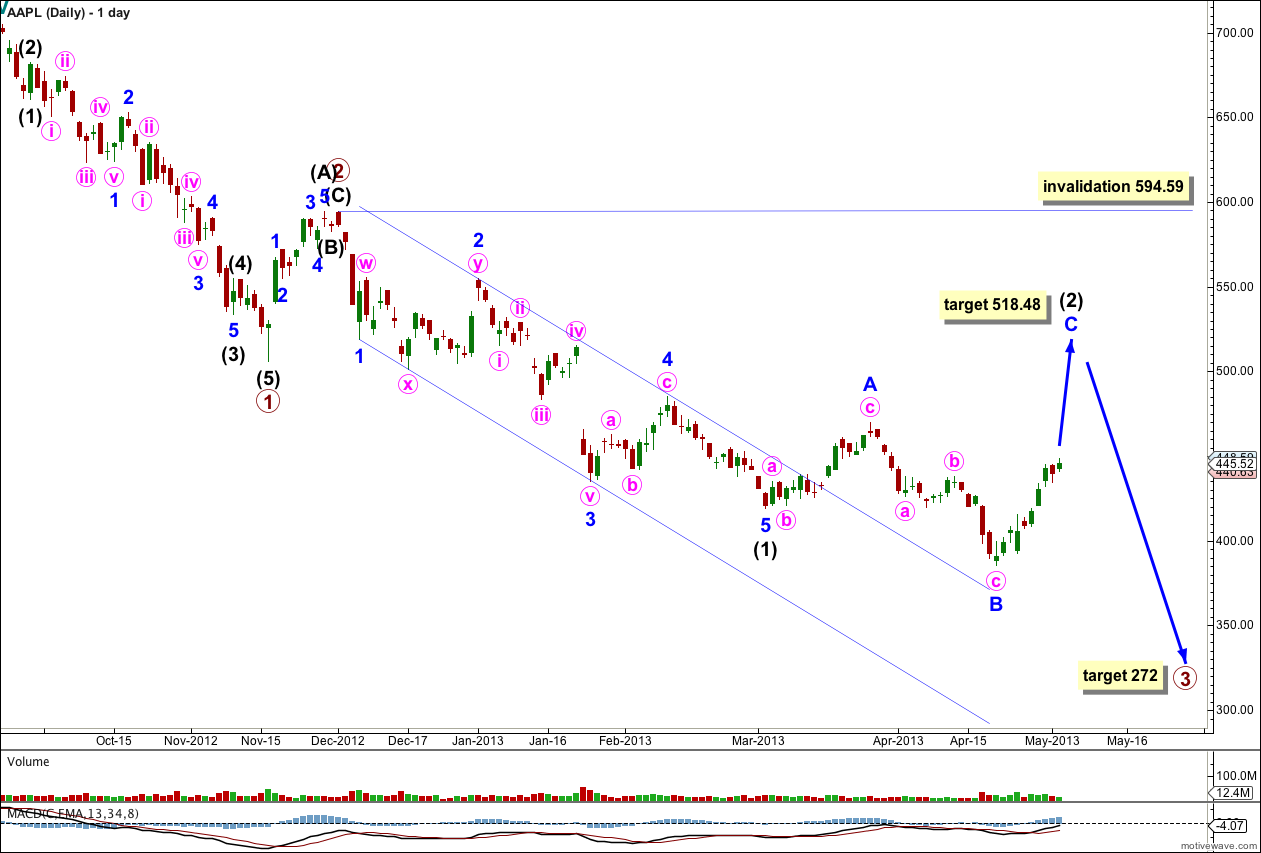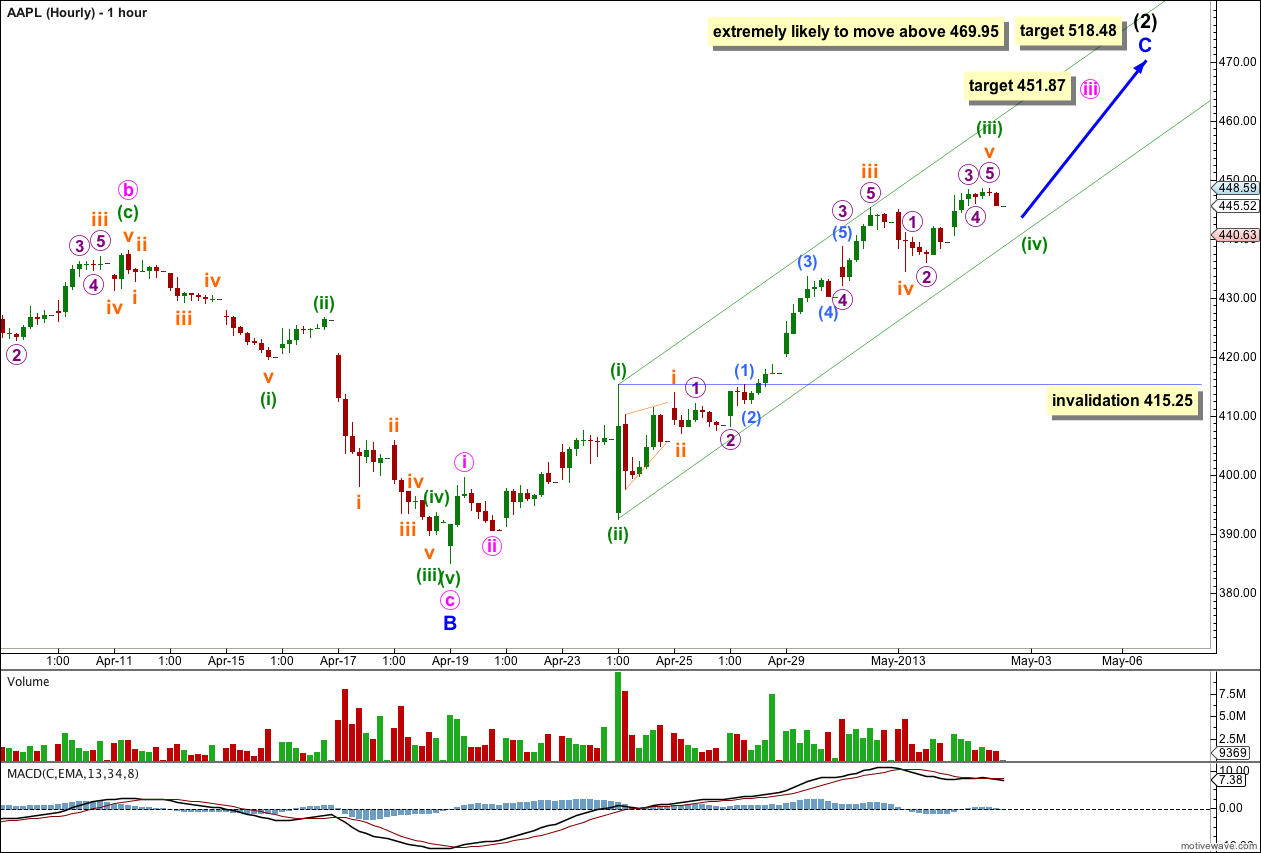Last analysis expected downwards movement from AAPL, but this is not what happened. Upwards movement has moved above the invalidation point on the hourly and daily charts.
The wave count has been reanalysed. This upwards movement is a correction of a larger degree. It is not over yet.
Click on the charts below to enlarge.
This wave count expects a five wave impulse for a cycle degree wave a is unfolding to the downside. Within the impulse primary waves 1 and 2 are complete. Primary wave 3 is extending. Within primary wave 3 intermediate wave (1) is complete, and intermediate wave (2) is an incomplete flat correction.
At 272 primary wave 3 would reach 1.618 the length of primary wave 1. This long term target is still months away.
Intermediate wave (2) may not move beyond the start of intermediate wave (1). This wave count is invalidated with movement above 594.59.
I have considered various possibilities for this downwards movement from the high labeled primary wave 2. What is most clear is that the middle of primary wave 3 has not yet passed because we have not seen momentum increase beyond that seen for primary wave 1. Primary wave 3 cannot be complete.
A channel drawn about intermediate wave (1) using Elliott’s channeling technique has been clearly breached. This indicates that this impulse is over and the correction to follow it has begun.
Intermediate wave (2) is unfolding as a flat correction where minor waves A and B both subdivide into three wave structures.
Minor wave C must subdivide into a five wave structure. It is unfolding as an impulse.
The most common type of flat is an expanded flat which requires minor wave B to be longer than 105% the length of minor wave A. It is 166.5%. An expanded flat would expect minor wave C to be 1.618 the length of minor wave A. This would be achieved at 518.48.
Minor wave C is extremely likely to make a new high above the end of minor wave A at 469.95 to avoid a truncation and a rare running flat.
Within minor wave C minute wave iii would reach 4.236 the length of minute wave i at 451.87.
Within minute wave iii there is no Fibonacci ratio between minuette waves (iii) and (i).
Ratios within minuette wave (iii) are: subminuette wave iii is 3.56 longer than 1.618 the length of subminuette wave i, and subminuette wave v is 0.41 shorter than 0.382 the length of subminuette wave iii.
Ratios within subminuette wave iii are: micro wave 3 has no Fibonacci ratio to micro wave 1, and micro wave 5 is 0.41 short of 2.618 the length of micro wave 1.
Ratios within micro wave 3 are: submicro wave (3) has no Fibonacci ratio to submicro wave (1), and submicro wave (5) is 0.42 longer than 0.382 the length of submicro wave (3).
Draw a best fit parallel channel about minor wave C. Draw the first trend line from the high of minuette wave (i) to the high of subminuette wave iii within minuette wave (iii). Place a parallel copy upon the low of minuette wave (ii). Expect any further downwards movement for minuette wave (iv) to find support at the lower edge of this channel.
Overall I would expect upwards movement for the next week from AAPL as minor wave 5 completes.



Hi Lara,
where do you get the multiple 4.236 to find the target for minute wave iii within wave C? Is this in the EWP book?
It’s just simple maths. Here is an explanation.